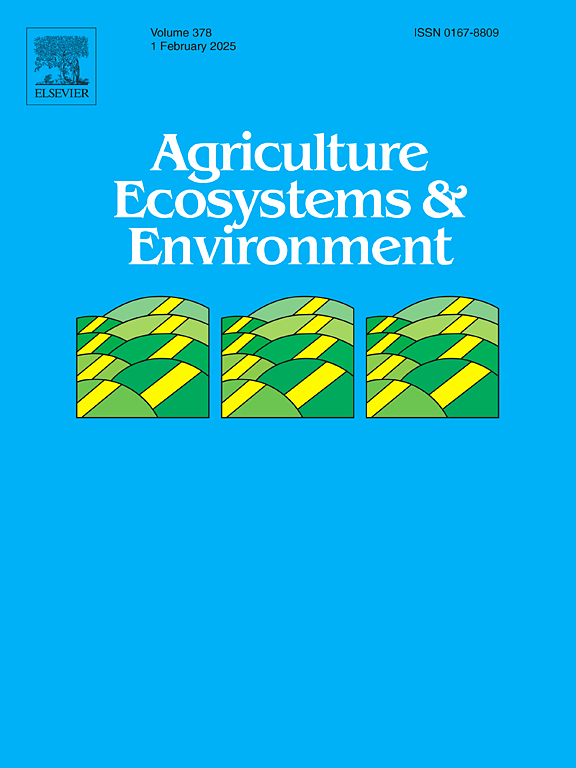Factors influencing nitrogen derived from soil organic matter mineralisation: Results from a long-term experiment
IF 6
1区 农林科学
Q1 AGRICULTURE, MULTIDISCIPLINARY
引用次数: 0
Abstract
Mineralised nitrogen (N) from soil organic matter (SOM) is a crucial source of N for both natural ecosystems and agroecosystems. Therefore, accurate estimation of the amount of N available to crops from SOM mineralisation is necessary to correctly manage N addition. For application in an N budget, a field-scale assessment of the main factors affecting SOM mineralisation is required. The objective of this study was to quantify the influence of meteorological conditions and soil properties on N mineralised by SOM in an agroecosystem. The N mineralised from the SOM was calculated as the N uptake of the unfertilised plot minus the N derived from atmospheric deposition and irrigation. This study analysed 29 years of crop, agrometeorological, and soil data from three maize cropping systems (maize for grain, maize for silage, and maize-It. ryegrass double cropping) in a long-term experiment conducted in NW Italy. A Linear Mixed Model (LMM) was developed for the purpose of this study. The average of N derived from SOM mineralisation predicted by the model was 96 kg N ha−1 yr−1, with a root mean square error of 22 kg N ha−1 yr−1. The fixed factors of LMM, which are soil organic carbon (SOC), carbon-to-nitrogen ratio (C/N) and the sum of rainfall and irrigation (R.I.), were responsible for 19 % of the annual variations in mineralised N. SOC and R.I. had a positive effect and greater weight on the process, whereas C/N had a negative effect and lower weight. The explanatory power of the model increased to 52 % when cropping systems and interannual variability were included as random factors. This study highlights the importance of weather conditions and SOC content in determining the amount of N derived from soil mineralisation and can contribute to plant nutrition. In a future climate scenario characterised by increased aridity, N mineralisation could decrease, thus increasing the demand for fertilisers.
求助全文
约1分钟内获得全文
求助全文
来源期刊

Agriculture, Ecosystems & Environment
环境科学-环境科学
CiteScore
11.70
自引率
9.10%
发文量
392
审稿时长
26 days
期刊介绍:
Agriculture, Ecosystems and Environment publishes scientific articles dealing with the interface between agroecosystems and the natural environment, specifically how agriculture influences the environment and how changes in that environment impact agroecosystems. Preference is given to papers from experimental and observational research at the field, system or landscape level, from studies that enhance our understanding of processes using data-based biophysical modelling, and papers that bridge scientific disciplines and integrate knowledge. All papers should be placed in an international or wide comparative context.
 求助内容:
求助内容: 应助结果提醒方式:
应助结果提醒方式:


